Salar d'Uyuni en Bolivie : 10 choses à savoir
Publié le 17 déc. 2024
Avec ses paysages à couper le souffle, le Salar d’Uyuni en Bolivie, plus grand désert de sel au monde, est une étape incontournable lors d’un voyage en Amérique du Sud. Des étendues de sel à perte de vue, bordées par des volcans et arrosées par des lacs d’eau salée dont la couleur orange ressemble à un soleil couchant, et des nuits étoilées bien loin des lumières de notre civilisation… Avant de partir en Bolivie, à la découverte du Salar d’Uyuni, découvrez 10 choses incontournables à savoir sur ce lieu mythique.
#1 Le plus grand désert de sel au monde
Le Salar d’Uyuni, la plus grande étendue de sel au monde, est situé au sud-ouest de la Bolivie, à distance égale entre les frontières chilienne et argentine, au cœur de la cordillère des Andes. Situé à 3650 mètres d’altitude, il s’étend sur environ 10500 km² et mesure plus précisément 150 km sur 100. Véritable désert d’étendue salée, le site alterne des couches de sel et de glaise sur une épaisseur d’environ 40 cm. Son origine remonte à la préhistoire, il y a 14000 ans environ, où se trouvait à cet endroit le lac Tauca qui, s’évaporant au fil du temps, a donné naissance aux salars d’Uyuni et Copaisa ainsi qu’aux deux lacs Poopo et Uru Uru.
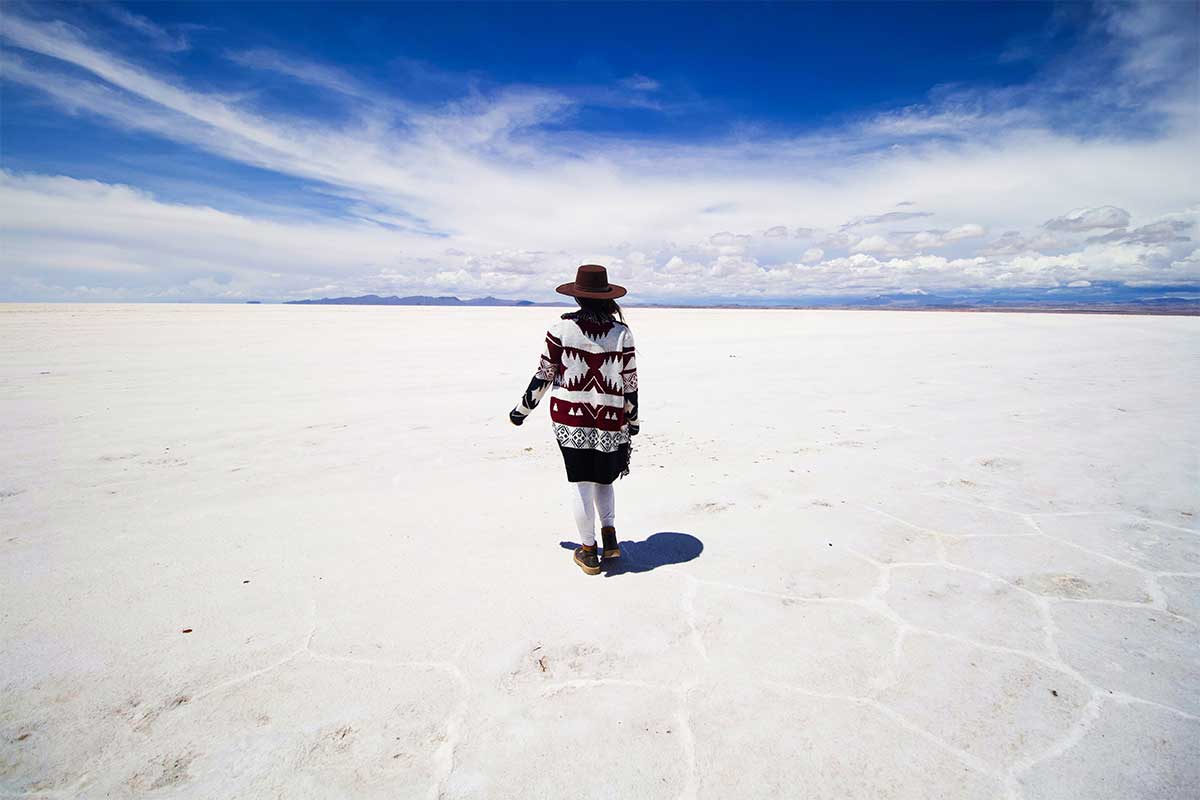
#2 La plus grande réserve de lithium au monde
Le Salar d’Uyuni, de par sa taille, dispose de la plus grande réserve de lithium au monde. Le lithium est utilisé comme composant principal pour les piles et batteries électriques, ce qui en fait une ressource très exploitable pour le pays. Le gouvernement bolivien est d’ailleurs conscient de ses richesses, qui ne laissent pas de marbre certaines multinationales…
#3 Quand visiter le Salar d’Uyuni en Bolivie
De par sa situation au cœur de la cordillère des Andes et de son altitude de 3650 m, le Salar d’Uyuni est un site assez venteux, plutôt ensoleillé, mais la visite du site varie totalement en fonction des saisons. Pendant la saison des pluies, de décembre à mars, le sol complètement plat peut rapidement être recouvert d’une vingtaine de centimètres d’eau, rendant inaccessibles certains îlots mais donnant une vision totalement irréelle du lieu, le reflet de l’eau sur le Salar faisant disparaître la ligne d’horizon. Pendant la saison sèche, d’avril à décembre, les journées sont ensoleillées et les nuits claires, propices à l’observation d’un splendide ciel étoilé.

#4 La faune et la flore du Salar d’Uyuni
En parcourant le Sud Lipez, vous entrez dans la Réserve nationale de faune andine Eduardo Avaroa où vous aurez la chance d’observer pas moins de 3 espèces de flamants roses (dont les flamants roses de James, à bec jaune), des renards, des viscachas (petits rongeurs ressemblant à des lapins) et surtout des lamas, si caractéristiques de l’Amérique du Sud. En termes de végétation, les îlots sont recouverts de cactus parfois millénaires pouvant atteindre une dizaine de mètres de haut.
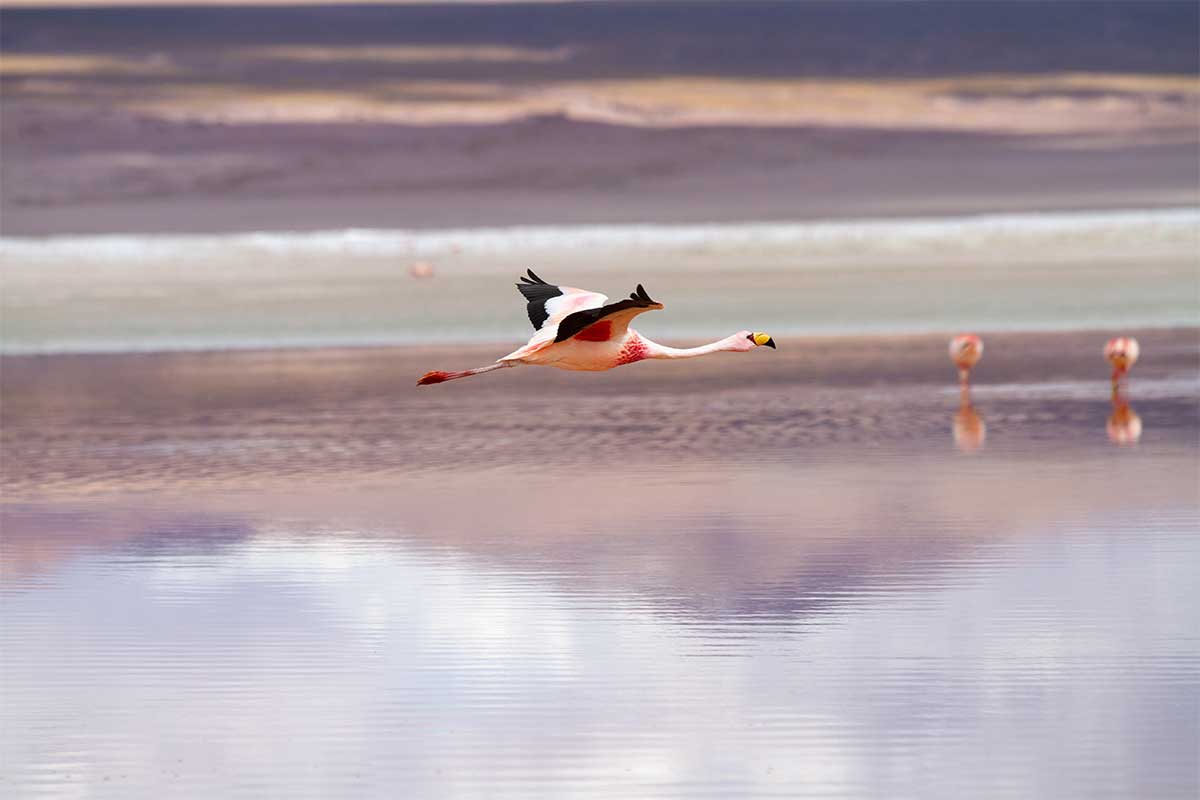
(c) Elizabeth Gottwald – Unsplash
#5 Visite guidée du Salar
Dès votre arrivée sur le site, il vous faudra choisir une agence locale pour faire le tour du salar, qui peut durer selon vos envies de 1 à 4 jours. Vous partirez donc en 4x4 depuis les villes d’Uyuni ou de Tupiza, plus au sud, pour arpenter la province du sud Lipez et découvrir le Salar.
- Renseignez-vous bien sur les détails de la prestation, surtout en termes d’hébergement. Selon la période, les températures peuvent atteindre jusqu’à -20°, alors soyez prévoyants pour éviter de gâcher votre visite.
- Posez toutes les questions nécessaires au bon déroulement du périple : sur le chauffeur, le nombre de personnes, la nourriture, et assurez-vous d’avoir la quantité d’eau nécessaire.
- Consacrez une somme raisonnable pour votre excursion, vous n’en serez que ravis et vos souvenirs seront bien plus mémorables.
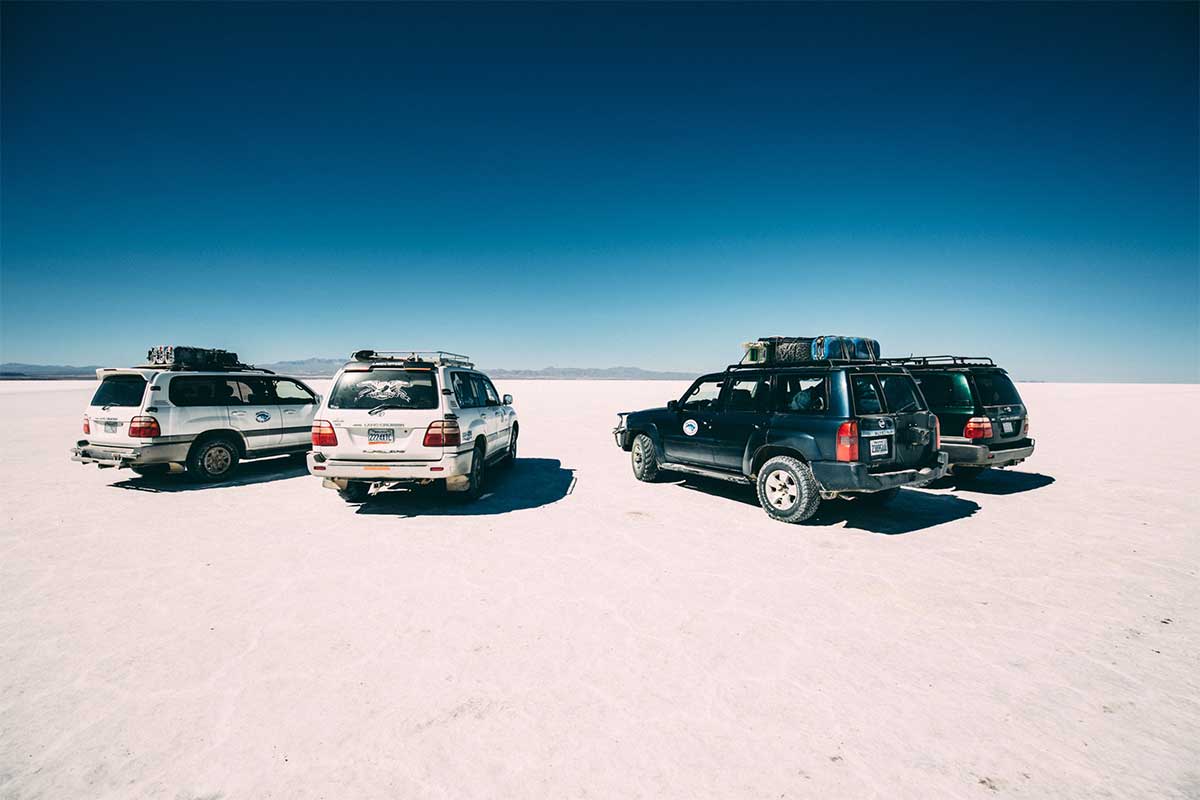
#6 Des lagunes de toutes les couleurs et les geysers du sud Lipez
L’un des incontournables du site, sans hésiter, reste la Laguna Colorada (4278 m d’altitude), au sud de la Bolivie. La vue y est simplement époustouflante. Ce lac salé de couleur rouge, due aux pigments de certaines algues, prend des couleurs incroyables ! C’est à couper le souffle, d’autant plus que c’est le terrain favori des flamants roses, par centaines… Laguna Blanca et la Laguna Verde, au pied des volcans Juriques et Licancabur à la frontière du Chili. Vous emprunterez aussi la “route des joyaux” qui borde les lagunes Honda, laguna Honda ou encore la Laguna Hedionda, toutes plus belles les unes que les autres. Une autre curiosité de la nature : les geysers du sud Lipez, qui vous permettront de profiter d’une baignade dans les sources d’eau chaude à proximité. Dépaysement et convivialité garantis !
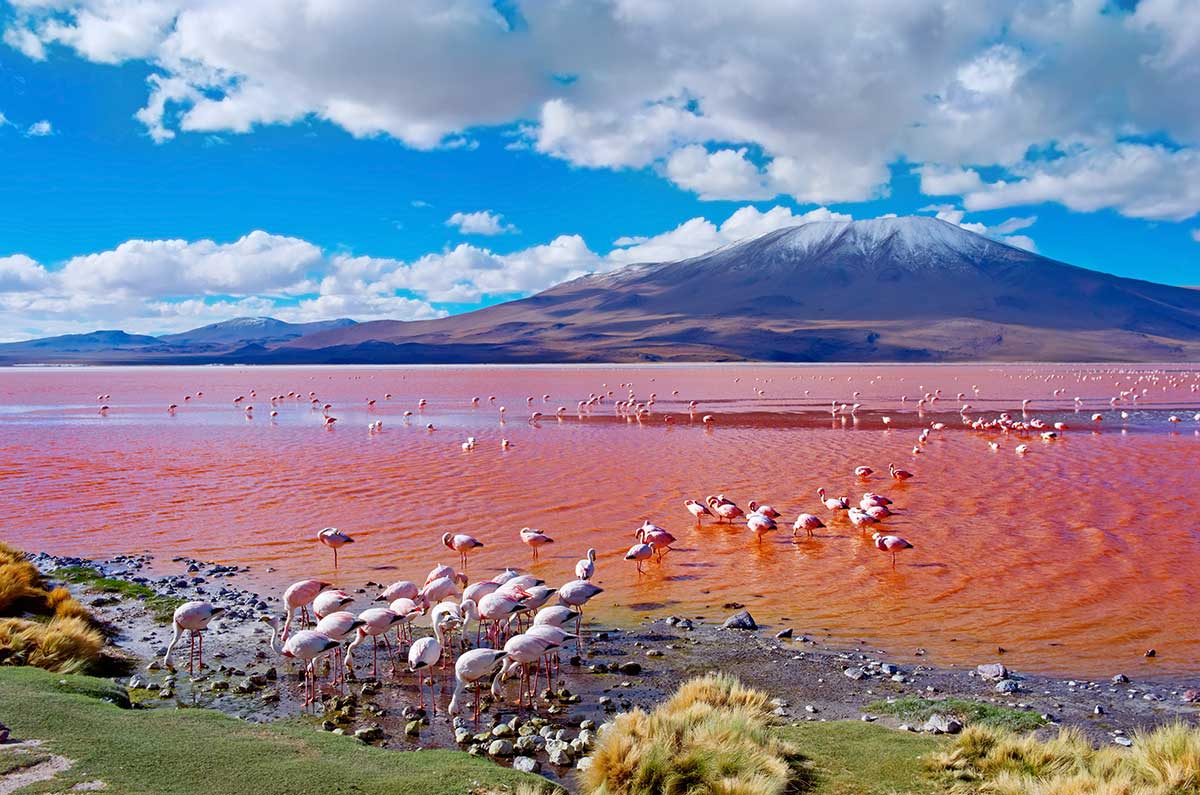
#7 Colchani, village du sel
Même si le minuscule village ne présente pas beaucoup d’intérêt, la population locale ne peut inspirer que du respect. Il semble perdu dans cette zone désertique, très peu peuplée, les habitants y vivent de l’exploitation du sel dans des conditions difficiles et moyennant un maigre salaire. Les hôtels de sel dans lesquels vous ferez probablement escale sont conçus à partir de briques élaborées dans le village : du sol au plafond, tout est conçu à partir du sel, mobilier compris !
#8 Cimetière de trains
Le temps semble s’être figé dans le cimetière de trains d’Uyuni. Des carcasses de locomotives s’entassent dans ce lieu tellement surprenant… Datant du début du XXe siècle, ces trains ont été laissés à l’abandon suite à l’échec d’un vaste projet de transport ferroviaire avec les pays limitrophes. Les vents fréquents et surtout salés ont rapidement eu raison des véhicules, qui ne ressemblent plus qu’à des carcasses en proie à la corrosion. À voir !
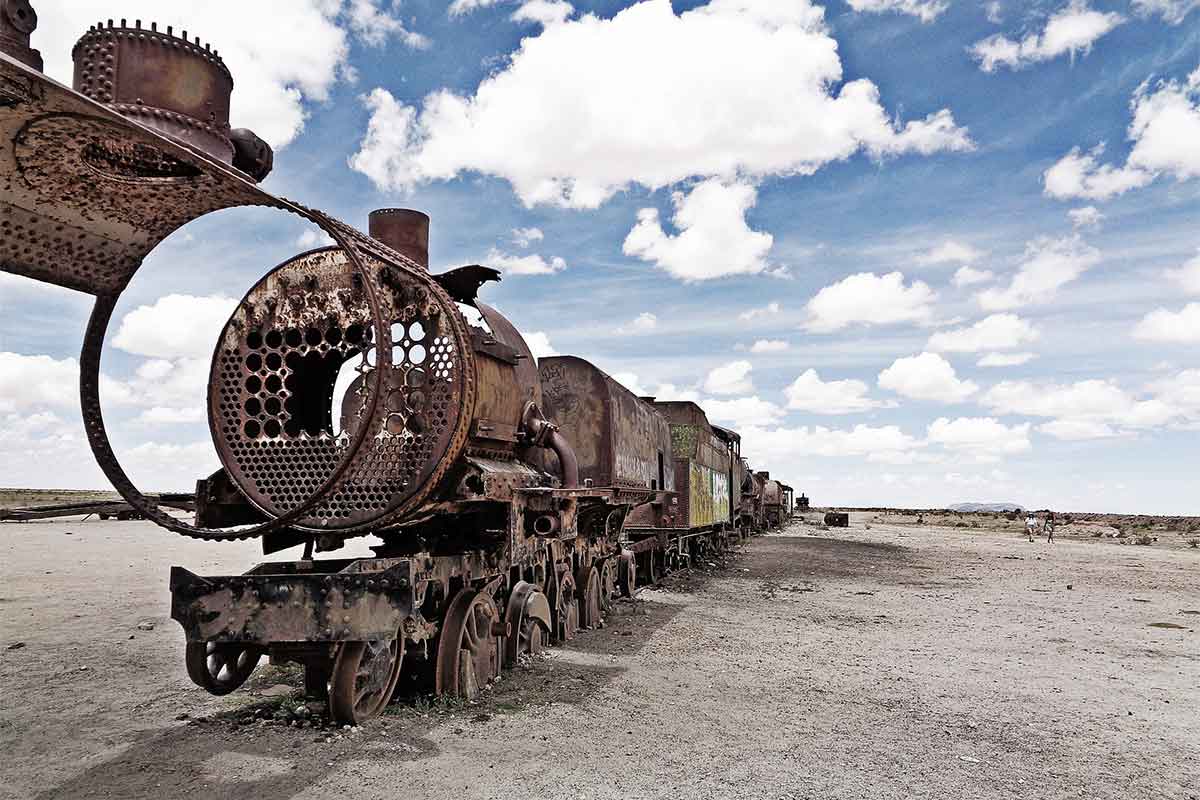
#9 La légende du Salar
L’origine du Salar provient de l’assèchement du lac Tauca, datant de la préhistoire, qui aurait formé ce vaste désert de sel. Cette thèse semblant peut-être trop terre à terre, les locaux partagent parfois leur théorie, bien plus poétique. En effet, la légende raconte que le désert, bordé par de nombreux volcans, compte parmi eux le Tunupa, considéré comme le seul volcan… féminin ! À la naissance de son petit volcan, tous ceux des alentours insistèrent et protestèrent pour revendiquer la paternité. Les Dieux, froissés par cette rivalité, décidèrent d’immobiliser tous ces volcans. Le chagrin de Tunupa fut alors tellement immense que le sel de ses larmes inonda les environs et forma le désert de sel actuel. Une belle histoire !
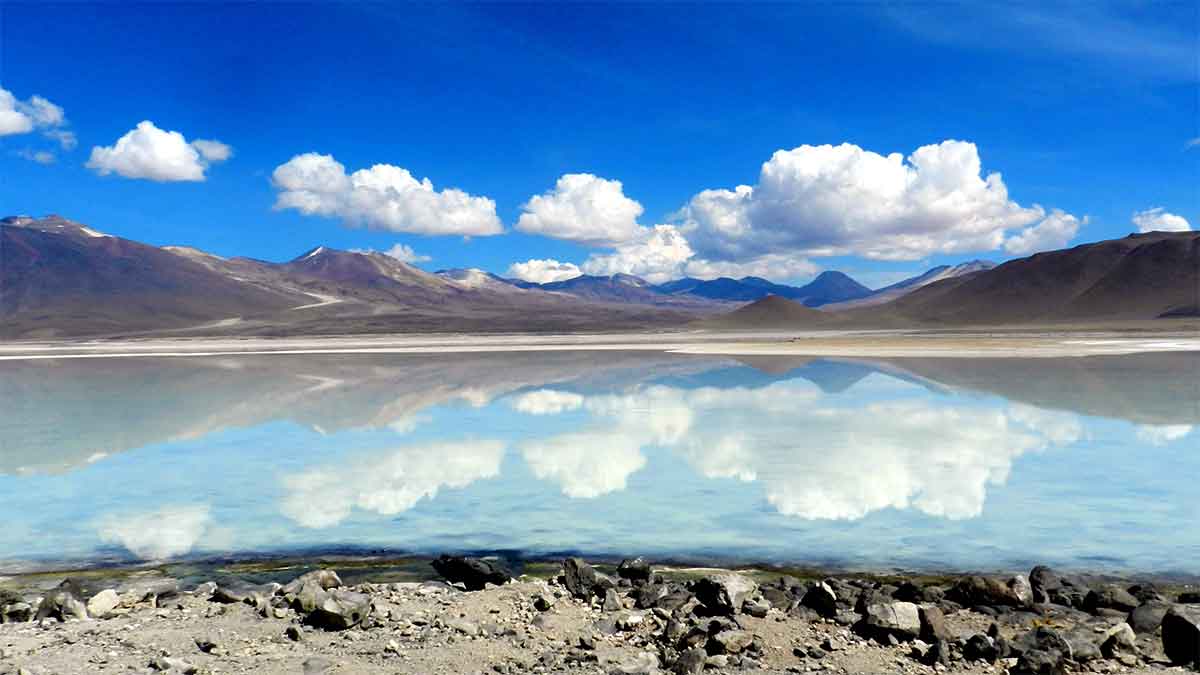
#10 Quoi emporter lors d’une excursion sur le Salar d’Uyuni
Prévoyez un bon équipement avant de vous aventurer dans le Salar.
- Des vêtements chauds sont bien évidemment de rigueur : gants, chaussettes, gros pulls, collants et bon blouson, le plus léger et le plus chaud possible.
- À ne pas oublier : crème solaire haute protection et des lunettes de soleil de bonne qualité. La luminosité et l’effet miroir peuvent être très nocifs pour les yeux, vous ne profiteriez pas du spectacle.
- Un bidon d’eau de 5 litres sera nécessaire afin de pouvoir avoir de l’eau potable pendant les quelques jours du circuit.
- Enfin, il semble indispensable d’emporter un bon appareil photo. Vous ne regretterez pas votre investissement.
Enfin, n’hésitez pas à demander à une agence locale en Bolivie de vous organiser un périple de quelques jours lors de votre prochain voyage en Bolivie. Car cet endroit est véritablement magique et insolite, véritable patrimoine de notre planète. Et surtout, n’oubliez pas de respecter les lieux, et comme diraient les Boliviens, la Pachamama, notre Terre Mère !
(c) streetflash – shutterstock.com
Un site du
Créer votre voyage sur mesure avec Quotatrip et recevez des offres sur mesure directement dans votre boîte mail de nos agences locales partenaires.
Découvrir un pays